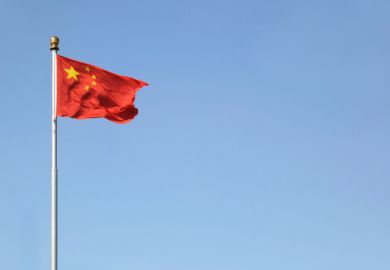Derek Averre surveys academe's reaction to bioterrorism
One does not need to go far down the alphabet to come across words that are causing officials responsible for public health and security sleepless nights: al-Qaeda, anthrax and, currently very much in the public eye, avian flu. The potential for widespread death and disruption stemming from the deliberate use by state or non-state actors of pathogenic agents or from naturally occurring outbreaks of disease is now recognised by governments and scientists as a key threat to global security, perhaps rivalling the prospect of nuclear winter that haunted the world during the Cold War. Indeed, it is becoming increasingly clear that the dual-use biotechnology problem (improving defences against existing and future biological warfare agents necessarily involves researching their offensive characteristics), the life sciences revolution, and the reluctance to limit trade in biotechnologies for peaceful use, represent a complex spectrum of problems that require a range of policy responses, incorporating biosafety best practices, the promotion of international public health preparedness and the monitoring of trade in, and transfer of, biotechnologies - as well as biodefence measures.
The appearance of this journal is therefore welcome. Biosecurity and Bioterrorism , edited by staff at the Center for Biosecurity of the University of Pittsburgh Medical Center, aims to provide an international, interdisciplinary forum for debate on the issues posed by biological weapons and bioterrorism, and to engage experts in the fields of medicine, public health, law, security and biotechnology in seeking solutions to the problems posed.
The articles generally fall into two categories - biodefence/biosecurity and public health policy - with the occasional foray into topics such as dealing with the consequences of a biological attack, international law and ethical codes of conduct. The layout is impressive: original papers do not exceed 3,000 words but methodological rigour and quality are not sacrificed to brevity; most issues include interviews with leading security and public health officials, as well as summaries of reports or discussions and a compilation of relevant publications. Recent issues have introduced a section providing an accessible digest of important scientific and political developments. What is arguably lacking is an editorial reflecting the journal's viewpoint - not an easy ask, but an authoritative lead is badly needed to highlight the key issues where science and politics intersect. Finally, each issue contains a section entitled "Go figure..." which produces some telling statistics: the total cost of US military operations in Afghanistan and Iraq to date is put at $7 billion (£160 billion), rather larger than the $2.8 billion that represents the entire programme budget of the World Health Organisation for 2004-05.
Several of the original papers published not only deal with the biosecurity/public health problematique, but also go to the heart of contemporary issues of global security, society and governance. Where should biosecurity resources be directed - to counter the perceived threat of a bioterrorist attack using smallpox or anthrax, or to providing vaccines for naturally occurring infectious diseases such as pandemic influenza? How are hospitals dealing with vaccination and immunisation and how would they cope in the event of a pandemic? How can governments and public health organisations ensure that sufficient doses of flu vaccine and syringes are made available by pharmaceutical companies driven by commercial considerations? What are the prospects for vaccine distribution to developing countries already devastated by Aids and other diseases? What is the role of science and scientists in the modern world and how do we ensure the trust of the public? How does the international community - widely perceived as weakened by the events of the past few years - act on a multilateral basis to find a common assessment of and approach to dealing with bioproliferation and bioterrorism?
One report, quoting a senior official in the Counterproliferation Division at the CIA who has clearly been influenced by the ruminations of Donald Rumsfeld, indicates we have some way to go: "We don't know more about the biological weapons threat than we did five years ago, and five years from now we will know even less."
Biosecurity and Bioterrorism is attracting contributions from scientists, security scholars and analysts, public officials and, occasionally, representatives of the private sector. Perhaps the main criticism that might be levelled at the journal is that its contributors (and indeed the members of the editorial board) are almost exclusively from the US. To an extent this is inevitable: as one article points out, "the United States, far more than any other nation, seems to be terrified of a potential catastrophic bioterrorist attack" - the scale of the US biodefence and biosecurity-related public health programmes is staggering, dwarfing those of other countries. The overwhelming preponderance of US contributors may indeed reflect the complacency of Europe and the rest of the world, as much as the US obsession. Nevertheless international dialogue based on the shared experience of a global network of experts is essential both to develop effective and coordinated biosecurity measures and to convince legislators of their worth.
Overall this is a commendable effort. The journal is general enough to inform non-specialists about key aspects of the problem while generating papers of sufficient detail to inform more specialised debates across a range of disciplines. The important issues of policy, science, social provision, ethics and law it raises should - as the journal itself promises - be of interest to professional communities with strategic, scientific and operational responsibilities critical to improving biosecurity policy and practice, in particular those involved in medicine, biotechnology, public health, law, security policy, agriculture and food safety.
Derek Averre is senior research fellow, European Research Institute, Birmingham University.
Biosecurity and Bioterrorism: Biodefence Strategy, Practice, and Science
Editor - Tara O'Toole and Thomas V. Inglesby
Publisher - Mary Ann Liebert Quarterly
Price - Institutions $618.00 Individuals $352.00
ISSN - 1538 7135



